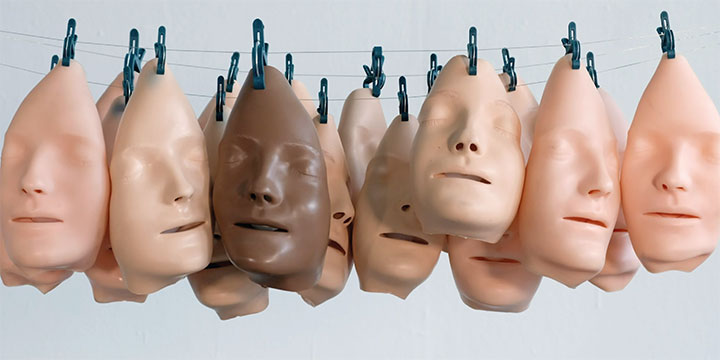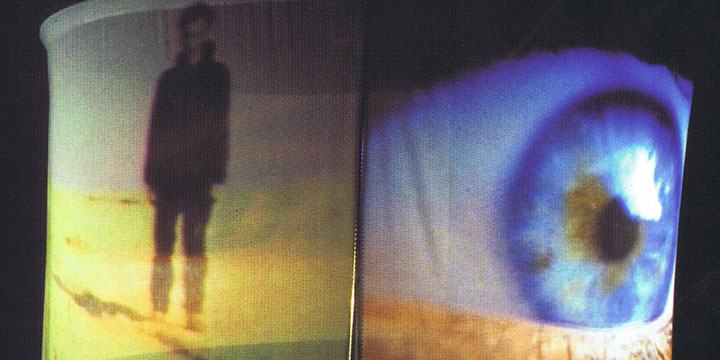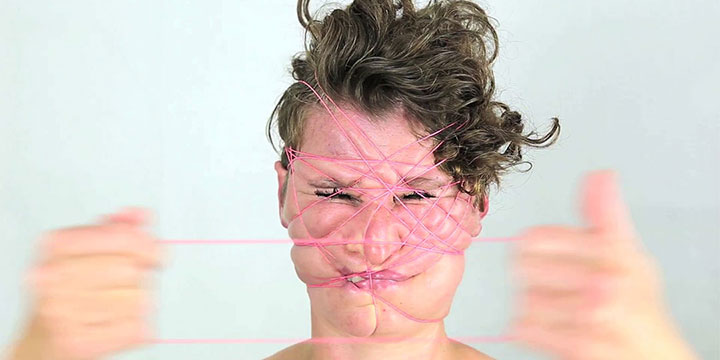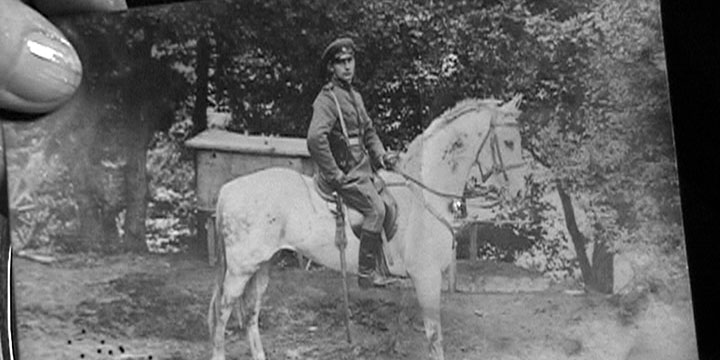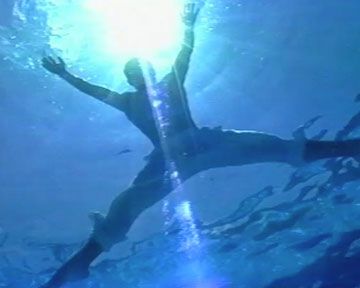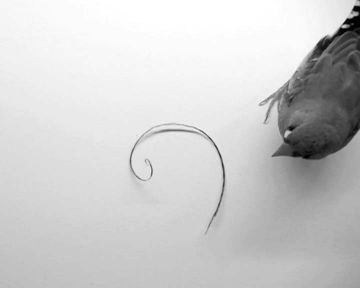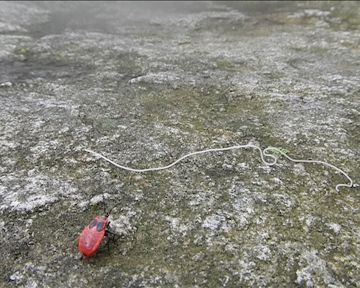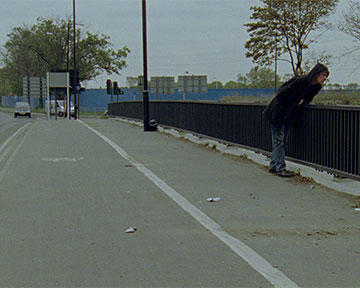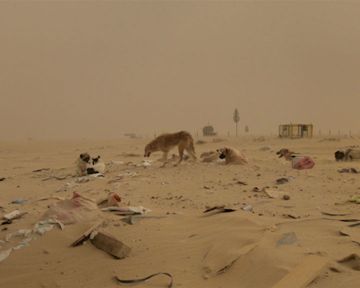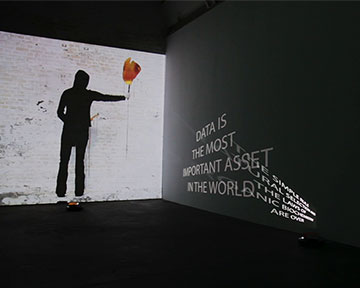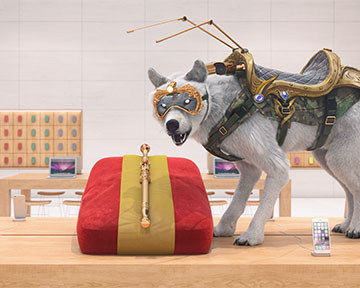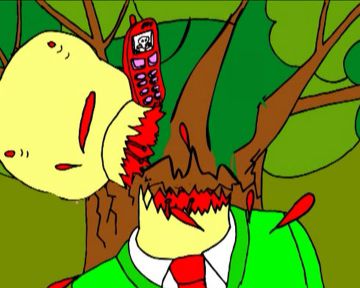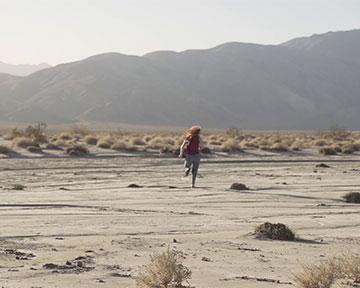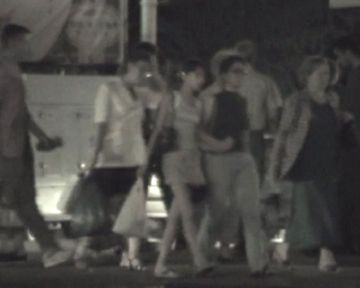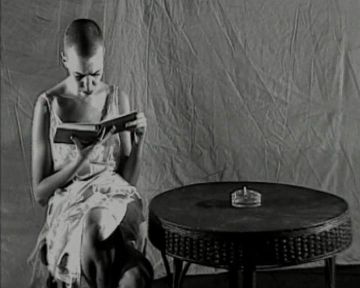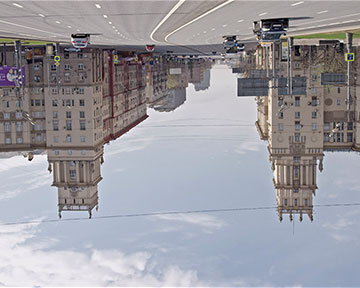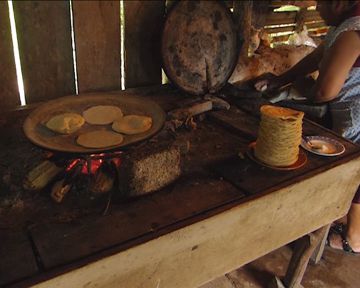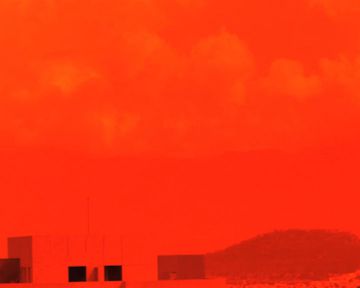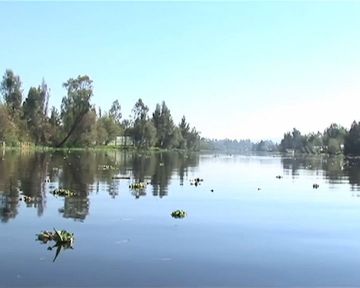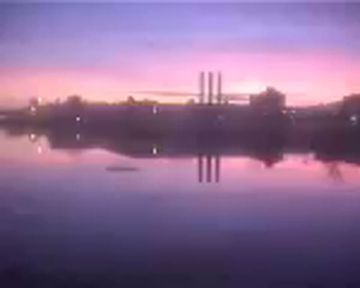Katya Gardea Browne
Works
Galleries
for further information contact blinkvideo
Germany
Phone: +49 40 22748986
E-Mail: info@blinkvideo.de
Statement
On the Aesthetic Borderline Between Film, Body, Landscape and Politics in Katya Gardea Browne’s Video Piece “Tijuana Girl Crossing”
by Regine Rapp
In her large corpus of works Katya Gardea Browne has repeatedly addressedpolitical and social themes with special attention togender. In an impressive range of works including film and video, installations and photography the Mexican--American artist has taken on geopolitical themes while maintaining an impressive formal aesthetic strength.
An excellent example of this is her artistic video workTijuana Girl Crossing from 2009. Gardea Browne has so precisely utilized the formal elements of film, such as color, sound, camera angle and editing, with the result that this video work condenses a wide range of issues into a complex artistic web. In particular the film presents concepts of various types of boundaries – especially body, landscape and geopolitical borders – all the while questioning the relationship and biopolitics between humans and national boundaries.
The narrative, which is constantly being interrupted by abstract film sequences in bright yellow or green, follows a young woman as she goes on trails, through fields and crawls through fences along the Mexico-- California border. Her motion varies from walking to hiking, and at times she seems to be attemptingto flee. The woman repeatedly appears to be searching for the camera, something that in turn casts us, the viewers, in the role of observers or voyeurs, scrutinizing her actions.
The camera tends to keep a distance, only occasionally zooming closer to the protagonist – giving one the impression that it is a surveillance camera. This view is not just one of neutral observation, but of monitoring; something that is strengthened by the dominant shade of green in the video, a tone often rendered by surveillance cameras.
The woman's body mostly occurs in fragmentary appearances, and its movement acts in opposition to the barren, treeless landscape. As in other works, in this video Gardea Browne also brings the female body into contact with architecture – in this case the special architecture of the border zone, which becomes a geopolitical stage. In the context of space theory Michel de Certeau immediatelycomes to mind, distinguishing between space (espace) and place (lieu). Space describes a place that is used for a certain action, as a grid of movable elements.1 According to de Certeau, space is an activated place. Whereas place can be a geometric figure, is silent, and refers to a condition (state); space is rather associated, according to de Certeau, with movement, the spoken word, or the way (the path). Comparing this oppositional pair of spatial parameters to Gardea Browne’s video piece, the female protagonist transfers place into a political space through her physical presence and constant walking along the border, which without her individual human occupation would have been merely an abstractplace.
Let us reflect more about the aspect of walking and wonderingalong the border area in Gardea Browne’s video piece: What would otherwise be a series of intimate moments, in which the human form meditatively wanders through nature, is here nullified rather effectively by the artificiality of the border context. According to Marc Augé’s space theory, it could be defined as a non--site (non--lieu), which defines a transitory place with a loss of anthropological experience.2 One notices a certain loneliness in the wandering habits (gestures) of the woman. Surprisingly enough, Augé also uses the term lonelinessin his description of so--called non--sites, evoked by a lack of personal identification with the site itself. The woman's wandering about in Tijuana Girl Crossing emphasizes a type of an inner and outer disorientation which comes very close toAuge’s definition of non--sites in submodernity, wherein non--sites are often connected to rules, laws, or in short, codified programs.3
Beyond the realm of thevisual, the layered soundtrack plays an essential role. Various strands of sound meander throughout the entire video: most recognizable is the noise of a running 8mm camera (a magnificent cinematic self--reference!); while at times one hears futuristic, often hallucinogenic compilations evoked by radio--frequency tones with digitally processed gongs. As an auditory counterpart we catch alternating sequencesof police or border control broadcasts, connoting surveillance.
Meanwhile the film editing is always well balanced: longer, calmer sequences are replaced by shorter, quicker sequences, usually containing jump cuts. Finally the use of fast--forwarding makes the protagonist's strides seem absurd, bringing a strange slapstick note to a hike along the border.
Another strong formal decision by the artist is the two--part video image structure, which forms a diptych. Sometimes Gardea Browne places the protagonist on the left half, sometimes on the right half of the image, in the process regularly extending the (apparent) narrative with abstract and brightly colored voids. Very often, we encounter the principle of reflection: actual and mirrored footage are presented simultaneously on the two parallel surfaces of the diptych. This mirrored duplication of the footage is like a game of cinematic linearity; forward motion appears to be slowed down by the mirrored reverse. The use of the diptych underlines the formal borders of the celluloid, as well as the geopolitical situation of the border zone.
The use of soft focus also plays a role in Tijuana Girl Crossing: a constant switching from sharp to blurry conveys distance on the level of content, constantly breaking down the narrative and finally bringing the viewer to a point of loss of control over the image, which in turn leads to uncertainty in the viewer’s position of observation.
Finally, the phenomenon of the loop plays an important role in the video Tijuana Girl Crossing, which is about five minutes in length, but which has been created through different structures of repetition, something which functions hypnotically when projected in the exhibition space. The loop's constant repetition makes finding a beginning or end to the work impossible. In the end, we viewers completely succumb to the (above mentioned) hallucinogenic undertow and are no longer able todifferentiate the boundaries between fiction and reality, which are constituted by the manifold connections between body, border and politics.
Regine Rapp
Berlin, September 2013
1 Michel de Certeau: L’intervention de quotidien, in: Michel de Certau: L’art de faire, Paris 1990, p. 218.
2 Marc Augé: Nicht-Orte. München 2010, p. 83 (first published in French as Non-Lieu. Introduction á une anthropologie de la surmodernité, Paris 1992).
3 Ibid., p. 98.
Biography
Born 1971 in Mexico
Alternate’s between Berlin and Mexico City
Studies
MFA, Yale University, New Haven, CT.
Film Studies at Yale University, New Haven, CT.
BFA, School of Visual Arts SVA, NY.
La Esmeralda, CNA, Mexico.
Selected group shows
2016
Natures Culture, Photography Exhibition, Alfred Ehrhardt Foundation, Curators R. Rapp and Christian de Lutz
2015
Substanziller Einfluss / Substantial Influence, Bayer Foundation, Curator Ludwig Seyfarth, Germany
2014
Frecuencias Residentes, Video and Installation, Rodrigo Campuzano, Mexico
Ruinen der Gerenwart / Ruins of the Present, Ludwig Seyfarth, Steinbrener/Dempf & Huber, Vienna Austria
Macro Biologies 1, The Biosphere, Art Laboratory Berlin, Germany
2010
Paisaje Después del Temblor, Curator Teodoro D. Lagunes, Galería Luis Adelantado, Mexico City
Off Fence, Michelle Chong and Ian Henderson, Art Laboratorie Berlin, April 2010
2009
Emplazamientos, Guillermo Santamarina, Canada
Peeping Tom, The Chain – Selected Artist, Berlin-Paris
Truestories.truesuccess & Sincerity is the New Radical, Curator Alanna Lockward, Freies Museum, Berlin
Curatorial Project & Hair Auction, collaboration w/ Alanna Lockward, Freies Museum, Berlin
2008
Tree on Lake TEXCOCO, Site Specific & Landscape Intervention, PUIMEX, Museo de la Ciudad de México
2007
Kunsthalle Berlin-Lichtenberg, Dorothee Albrecht & Ludwig Seyfarth, Berlin
Ocean Heart Project, Site - Lake TEXCOCO, Peter Phend, London UK
Cartographies, Video Installation, Institute of Culture, Margarita, Venezuela
Polvo Azúl / Blue Dust, Espacio Central, Curator Frederik Janka, Santa Barbara California
Tijuana Girl Crossing, Feminism & Video Abstraction, Curator Frederik Janka, El Particular & Nina Menocal, Mexico
2006
Still Water Rising, Mirror Sculpture & Video Installation, Estacionarte / Jumex MACO Art Fair, Mexico
2005
Other Dimensions on Abstraction, Roberts & Tilton, Gallery One Twenty Eight, Bowery, New York
It’s Not Rocket Science, California Biennale, San Francisco & Oakland
Texas Street Pavilion, Peter Kirkeby Gallery, w/ Kay Harvey and Gregory Edwards, San Francisco
2002-2004
MUCA Gallery, Artists Prints Editions, New Zeeland
2003
Duct & Cover, SAFI Santa Fe Art Institute, Diane Karp, New Mexico
9/11 Rescue, New York Artist Studios, SAFI Santa Fe Art Institute, New Mexico
2002
Drawings and Water Colors Exhibition, Alianza Francesa, Oaxaca México
2001
DUMBO Arts Center, Wakas Wajahat & Joy Glidden, Brooklyn, New York
Selected solo shows
2012
Structure Paintings & Installation, Salón Centro / Centro Histórico, Mexico City
2011
Exhibition MANADA Architectural Boundaries, Sculpture & Photography, Mexico City
Paisajes y Abstracción, Galería Nadie es Perfecto, Casa Antigua / Oaxaca, Mexico
2010
Museo de Mujeres Artistas Mexicanas, Virtual Exhibition, Cuator Karla Jasso
Color of Skin, Video Screenings, Salón Centro / Centro Histórico, Mexico City
2009
SWEET SUGAR, Museo Experimental de El ECO, UNAM, Mexico City
2008
Tree Intervention Lake TEXCOCO, Museo de la Ciudad de México, PUIMEX, Mexico City
2007
Artist Feature, Architecture for Art, Curator Liane Nouri, New York
2006
Peripheral Landscapes - Bordering, Der Ester Stock Mariane Wagner, Berlin Germany
Green Scape-Blind Spot, Video and Sculpture Installation, UCSJ Celda Contemporánea, Mexico
2004-2005
Hidalgo Project, Structures & Landscape, Moving Sculpture and Fire Works, Oaxaca Mexico
2003
Animas Negras, IAGO Graphic Arts Institute, Francisco Toledo, Oaxaca Mexico
Círculos en Tierra Firme, Printmaking Project, SAFI Santa Fe Art Institute, New Mexico
2002
Watercolors and Drawings, Alianza Francesa, Oaxaca Mexico
2000
Muna, Wall Drawing, Dumbo Arts Center, Curated by Wakas Wajahat, Brooklyn, New York
Auctions and private collections
2008 Part of the JUMEX Collection, Mexico City since
2012 Mexico Vivo, Museo de Arte Moderno, Mexico City
1998–2000 British Center for the Arts, Aids Auction, Yale University
2003 Video Archive Francisco Toledo, Oaxaca Mexico since
2002-2004 MUCA Gallery International Artists Archive and Printmaking, New Zealand
2000 Luis de Llano Macedo, Fundación Televisa Mexico since
Katya Gardea Browne
Born 1971 in Mexico Alternate’s between Berlin and Mexico City Studies MFA, Yale University, New Haven, CT. Film Studies at Yale University, New Haven, CT. BFA, School of Visual Arts SVA, NY. La Esmeralda, CNA, Mexico. Selected group shows 2016 Natures Culture, Photography Exhibition, Alfred Ehrhardt Foundation, Curators R. Rapp and Christian de Lutz 2015 Substanziller Einfluss / Substantial Influence, Bayer Foundation, Curator Ludwig Seyfarth, Germany 2014 Frecuencias Residentes, Video and Installation, Rodrigo Campuzano, Mexico Ruinen der Gerenwart / Ruins of the Present, Ludwig Seyfarth, Steinbrener/Dempf & Huber, Vienna Austria Macro Biologies 1, The Biosphere, Art Laboratory Berlin, Germany 2010 Paisaje Después del Temblor, Curator Teodoro D. Lagunes, Galería Luis Adelantado, Mexico City Off Fence, Michelle Chong and Ian Henderson, Art Laboratorie Berlin, April 2010 2009 Emplazamientos, Guillermo Santamarina, Canada Peeping Tom, The Chain – Selected Artist, Berlin-Paris Truestories.truesuccess & Sincerity is the New Radical, Curator Alanna Lockward, Freies Museum, Berlin Curatorial Project & Hair Auction, collaboration w/ Alanna Lockward, Freies Museum, Berlin 2008 Tree on Lake TEXCOCO, Site Specific & Landscape Intervention, PUIMEX, Museo de la Ciudad de México 2007 Kunsthalle Berlin-Lichtenberg, Dorothee Albrecht & Ludwig Seyfarth, Berlin Ocean Heart Project, Site - Lake TEXCOCO, Peter Phend, London UK Cartographies, Video Installation, Institute of Culture, Margarita, Venezuela Polvo Azúl / Blue Dust, Espacio Central, Curator Frederik Janka, Santa Barbara California Tijuana Girl Crossing, Feminism & Video Abstraction, Curator Frederik Janka, El Particular & Nina Menocal, Mexico 2006 Still Water Rising, Mirror Sculpture & Video Installation, Estacionarte / Jumex MACO Art Fair, Mexico 2005 Other Dimensions on Abstraction, Roberts & Tilton, Gallery One Twenty Eight, Bowery, New York It’s Not Rocket Science, California Biennale, San Francisco & Oakland Texas Street Pavilion, Peter Kirkeby Gallery, w/ Kay Harvey and Gregory Edwards, San Francisco 2002-2004 MUCA Gallery, Artists Prints Editions, New Zeeland 2003 Duct & Cover, SAFI Santa Fe Art Institute, Diane Karp, New Mexico 9/11 Rescue, New York Artist Studios, SAFI Santa Fe Art Institute, New Mexico 2002 Drawings and Water Colors Exhibition, Alianza Francesa, Oaxaca México 2001 DUMBO Arts Center, Wakas Wajahat & Joy Glidden, Brooklyn, New York Selected solo shows 2012 Structure Paintings & Installation, Salón Centro / Centro Histórico, Mexico City 2011 Exhibition MANADA Architectural Boundaries, Sculpture & Photography, Mexico City Paisajes y Abstracción, Galería Nadie es Perfecto, Casa Antigua / Oaxaca, Mexico 2010 Museo de Mujeres Artistas Mexicanas, Virtual Exhibition, Cuator Karla Jasso Color of Skin, Video Screenings, Salón Centro / Centro Histórico, Mexico City 2009 SWEET SUGAR, Museo Experimental de El ECO, UNAM, Mexico City 2008 Tree Intervention Lake TEXCOCO, Museo de la Ciudad de México, PUIMEX, Mexico City 2007 Artist Feature, Architecture for Art, Curator Liane Nouri, New York 2006 Peripheral Landscapes - Bordering, Der Ester Stock Mariane Wagner, Berlin Germany Green Scape-Blind Spot, Video and Sculpture Installation, UCSJ Celda Contemporánea, Mexico 2004-2005 Hidalgo Project, Structures & Landscape, Moving Sculpture and Fire Works, Oaxaca Mexico 2003 Animas Negras, IAGO Graphic Arts Institute, Francisco Toledo, Oaxaca Mexico Círculos en Tierra Firme, Printmaking Project, SAFI Santa Fe Art Institute, New Mexico 2002 Watercolors and Drawings, Alianza Francesa, Oaxaca Mexico 2000 Muna, Wall Drawing, Dumbo Arts Center, Curated by Wakas Wajahat, Brooklyn, New York Auctions and private collections 2008 Part of the JUMEX Collection, Mexico City since 2012 Mexico Vivo, Museo de Arte Moderno, Mexico City 1998–2000 British Center for the Arts, Aids Auction, Yale University 2003 Video Archive Francisco Toledo, Oaxaca Mexico since 2002-2004 MUCA Gallery International Artists Archive and Printmaking, New Zealand 2000 Luis de Llano Macedo, Fundación Televisa Mexico since
